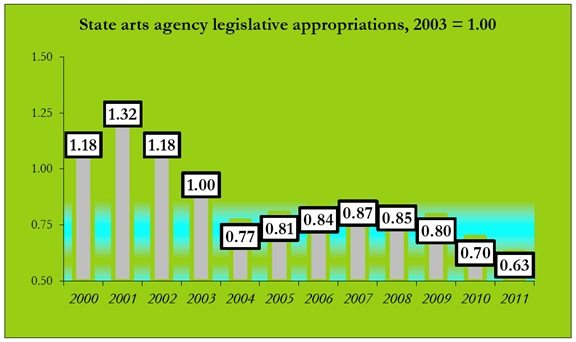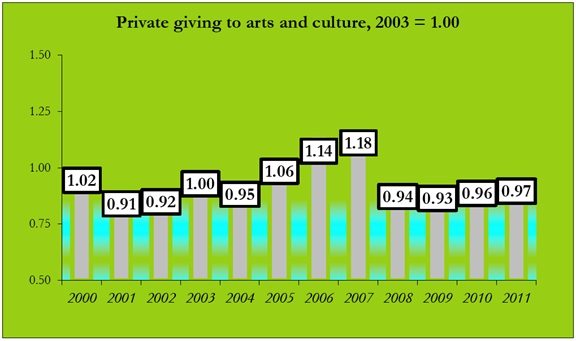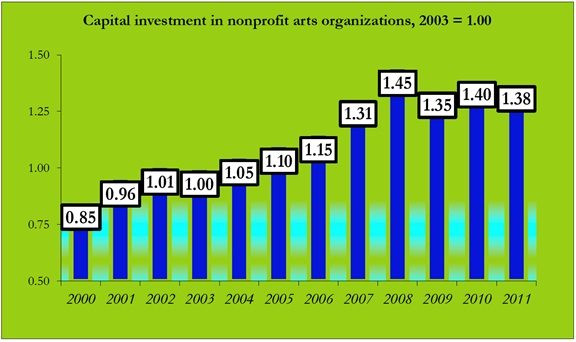
Chris Howey / Shutterstock.com
September 16, 2013; ArtsIndex
NPQ has been noting what appears to be ongoing financial strife at a significant number of large arts organizations across the country—performing arts institutions and museums, primarily—and this report would tend to back up that impression.
Americans for the Arts’ 2013 Arts Index shows that the recovery has not brought much for the better to those organizations. In 2013, 44.2% of arts organizations had operating deficits, as compared to 36% in 2007 before the recession—an 8.2% difference. At the height of the recession in 2009, the number of groups with operating deficits was 45%, which makes the recovery, as measured here by deficits, only 0.8%. The Index reports that organizations with larger budgets were more likely to run a deficit than those with smaller budgets, and that there was no predictable pattern based on any specific arts discipline.
Part of the problem, of course, is the precipitous drop in public funding at the state level, but that started in 2003…

…and the reduction in private giving.
Sign up for our free newsletters
Subscribe to NPQ's newsletters to have our top stories delivered directly to your inbox.
By signing up, you agree to our privacy policy and terms of use, and to receive messages from NPQ and our partners.

Oddly, capital investments in nonprofit arts organizations were higher during the recession than in non-recessionary years:

There are some other interesting factoids in this report and those that preceded it. Between 2000 and 2010, the number of new nonprofit arts organizations grew 49 percent faster than all nonprofit organizations, which grew 32 percent, and this trend continued during the recession—3,000 new nonprofit arts organizations were created between 2007 and 2009. But, even while that was occurring, mainstream nonprofit arts organization attendance was declining. In 2011, 18,000 arts organizations lost their nonprofit status in the IRS crackdown.
NPQ would love to hear from those trying to manage large arts organizations through the past few years. What are the dynamics at work?—Ruth McCambridge











